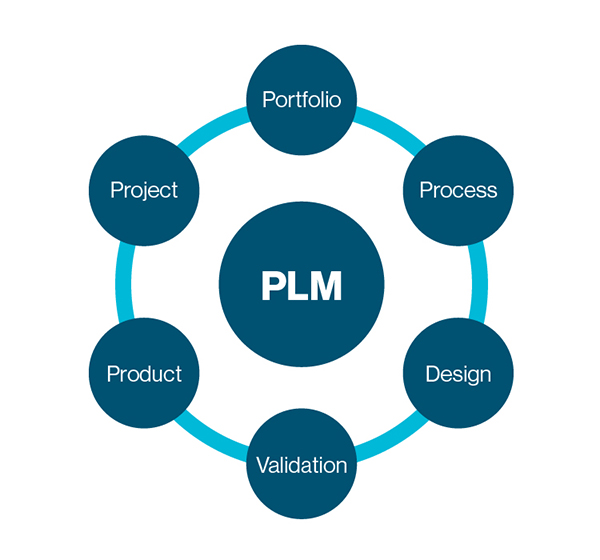Transformational PLM is Hard – It’s Time to Rally the Team
 Achieving Long-Term Transformational Success with PLM in Life Sciences
Achieving Long-Term Transformational Success with PLM in Life Sciences
In this blog series, I provide insights as to why product lifecycle management (PLM) has true potential to be so transformational for life sciences companies, but many aren’t getting there. We have covered adoption obstacles and turned our attention to developing a business strategy focused on innovation and then a subsequent PLM strategy. We have talked a lot about picking a vendor and getting prepared. Next, we need to consider creating the necessary ground swell, excitement, and momentum to ensure adoption.
This is going to be big – really big – which means we’ll be fundamentally changing how we work every day for the better. And not just for engineers, but just about everyone who touches the product in any way. If we do PLM right, it should affect 90+% of the organization.
But this enterprise nature also means PLM will be hard, and every phase will be challenging. Data migration alone is enough to make you want to quit. So developing and nurturing buy-in from the organization is essential to longevity. Here are some practical things you can do to rally the team.
Socialize Your Roadmap
Socialize the roadmap with the right stakeholders, in the right order, at the right time. The roadmap should paint a vision for the organization that is truly inspiring, especially for companies that are replacing very dated tools or point solutions that are focused on very limited set of processes with no integration to other internal systems.
As the roadmap is communicated, it’s helpful to build a stakeholder assessment, tracking them with an organizational structure (showing reporting lines), and indicating who is resistant, neutral, positive, etc.
The roadmap should be painted from two angles to provide different perspectives:
- It must address how PLM impacts business drivers (compliance readiness, time to market, global access, market share, etc.)
- It should consider the day-in-the-life of a typical engineer, quality manager, regulatory lead, sales executive or operations worker
Most often I see companies over-emphasize the business angle (you win the mind of the business) but not think about the people (you don’t win the heart). In this scenario, executives have high expectations, but people don’t embrace the system, and the business results that we got so excited about aren’t achieved.
Brand PLM
To really get the excitement going, develop a change campaign and a brand for your PLM program. A brand is much more than just a cool sounding name and logo; it needs to speak to people on an emotional level.
As you build your brand, consider questions like:
- With this new capability, how much more effective and better will daily work be?
- What tasks can people skip now, allowing them to focus on more interesting work?
- How much more informed will any individual be if the data is smartly integrated?
- How much faster can you make a decision and move forward?
- How much more confident can you be in decisions that are made?
Next, use the stakeholder assessment to build a change campaign. This is a comprehensive sequence of events that involves talking to the right people (yes there will be an element of selling), conference room pilots, lunch-and-learns, and of course classroom/computer based training and coaching.
Innovate Coaching and Training
One of my favorite ideas is to keep classroom training to a minimum (formal classroom training is only so-so effective in my view) and instead, interject coaches (or Support Ninjas as we sometimes refer to them) throughout the organization. These folks do real work alongside people as they use the system, ensuring proper use and giving the initiative a more personal touch.
If you really want to step up the results, train the coaches in not only the tool but the process area they help with. This will drive results beyond what the PLM tool can provide and instead drive new behaviors.
If implemented well, PLM can be so meaningful to people that do the day-to-day work. Get them on your side by winning the emotional battle. This will help develop sustained adoption, ensuring the longevity of the program.
A Note of Caution
In some cases, a big, high-impact change campaign done at the wrong time can actually be damaging, so timing is everything. Step forward carefully and intentionally, and ensure you understand the political landscape. It may even be prudent to get something small implemented successfully before going big.
Originally published on viewpoints.kalypso.com; image credit: wikimedia.org
Wait! Before you go…
Choose how you want the latest innovation content delivered to you:
- Daily — RSS Feed — Email — Twitter — Facebook — Linkedin Today
- Weekly — Email Newsletter —
 Dave Hadfield brings over 17 years of experience in product lifecycle management (PLM) to Kalypso‘s clients, with deep expertise in the medical device industry. He is a principled business executive and respected leader with almost 19 years of experience delivering business transformation by improving the Client’s Innovation engine.
Dave Hadfield brings over 17 years of experience in product lifecycle management (PLM) to Kalypso‘s clients, with deep expertise in the medical device industry. He is a principled business executive and respected leader with almost 19 years of experience delivering business transformation by improving the Client’s Innovation engine.
NEVER MISS ANOTHER NEWSLETTER!
LATEST BLOGS
Three things you didn’t know about credit cards
Photo by Ales Nesetril on Unsplash Many of us use credit cards regularly. From using them for everyday purchases to…
Read MoreFive CV skills of a business-minded individual
Photo by Scott Graham on Unsplash The skills listed on a CV help employers quickly understand your suitability for a…
Read More


